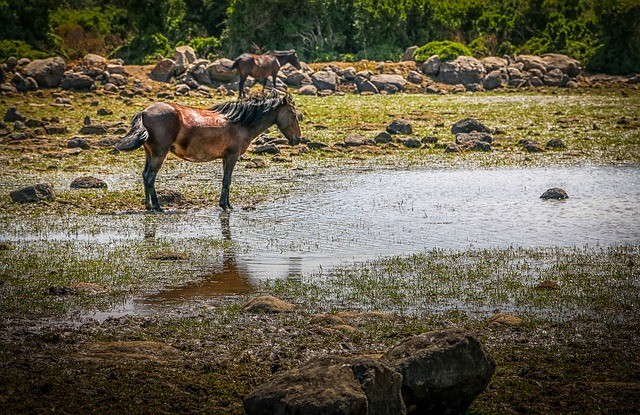
Vet Talk: Dermatophilosis
This week we’re learning about Dermatophilosis, an infection that thrives in mud.
Called rain scald, rain rot, mud fever, and “skin funk” by equestrians everywhere, veterinarians generally diagnose and treat all the variations of Dermatophilosis using the same protocols.
Dermatophilosis specifically is an infection by the bacteria Dermatophilus congolensis. It is usually seen over the back, hindquarters, back of pasterns, or on the hind cannons and can be worse on white-skinned areas. Rain soaked skin that is broken, irritated, or damaged by insect bites or trauma is more likely to develop the disease.
Symptoms:
Lesions can be small dry crusts that are easily removed, or they can be larger, yellow-green or gray colored and contain pus.
“The lower layer of hair is firmly matted in small scabs which, when plucked may leave a characteristic ovoid [egg-shaped] bleeding surface. The undersurface of the scab is concave with the roots of the hair protruding and may have a covering of yellowish-orange pus. The affected areas are sore to touch, but are not itchy to the horse,” explained Sandy Sargent, DVM, resident in veterinary dermatology at the University of Tennessee to HorseChannel.com.
Treatment:
- Most cases resolve spontaneously if the horse is kept dry.
- Daily bathing with antimicrobial shampoos for the first week, then twice weekly until healed can be helpful, but the area needs to be throughly dried after washing.
- Severe cases require antibiotics prescribed by a veterinarian.
Prevention:
“Chronically infected animals are the primary source of infection,” Dr. Sargent explains. “Transmission can occur by flies, ticks, grooming equipment and tack. Once the disease has occurred within a barn or an individual horse, it is generally there to stay, just waiting for favorable weather conditions to reappear. In fact, any horse can be infected and once they have been, will often get it every year.”
Those “favorable weather conditions” are mud, moisture and heat — the primary ingredients of spring. Even body heat trapped under shedding hair is enough to set off an infection.
Transmission of the infection can be avoided by not sharing tack or grooming supplies and disinfecting all equipment that comes into contact with infected horses.
Has your horse ever been diagnosed with rain scald, rain rot, or mud fever? We’d love to hear how you treated the infection. Does it really come back every year without fail? Give us a shout in the comments.
Go Riding.







Leave a Comment